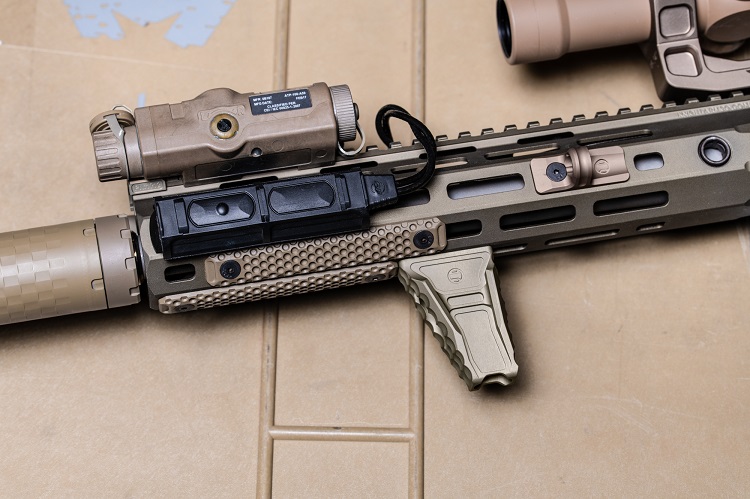Angled Grip vs Vertical Grip

In the world of firearms, every accessory serves a specific purpose, enhancing the weapon’s functionality and performance. Among the myriad of attachments available, grips play a crucial role in providing stability and control during shooting. Two popular options in this category are the angled grip and the vertical grip. While both aim to improve handling, each has its distinct advantages and best-use scenarios. In this article, we’ll delve into the characteristics, pros, and cons of angled grip versus vertical grip, aiding firearm enthusiasts in making informed decisions.
Angled Grip:
The angled grip, also known as the AFG (Angled Fore Grip), is designed to provide a more natural wrist angle when holding the firearm. It typically attaches to the underside of the weapon’s handguard at an angle, allowing the shooter’s hand to rest comfortably while maintaining a forward grip.
Pros of Angled Grip:
- Ergonomics: One of the primary advantages of an angled grip is its ergonomic design. By aligning the shooter’s wrist in a more natural position, it reduces strain and fatigue during extended shooting sessions.
- Improved Recoil Control: The angled grip promotes a more stable shooting stance, enabling better recoil control. This stability translates to improved accuracy, especially during rapid-fire or sustained shooting.
- Versatility: Angled grips are well-suited for dynamic shooting scenarios, such as close-quarters engagements or tactical maneuvers. The ergonomic design facilitates quick target acquisition and maneuverability in tight spaces.
Cons of Angled Grip:
- Limited Support: While angled grips excel in certain shooting situations, they may not provide the same level of support for precision shooting as vertical grips. Shooters relying on precise aim at longer distances might find angled grips less conducive to their needs.
- Personal Preference: Grip preference varies among shooters, and some individuals may not find angled grips comfortable or suitable for their shooting style. It’s essential to test different grip options to determine the best fit for individual preferences.
Vertical Grip:
In contrast to the angled grip, the vertical grip extends downward from the firearm’s handguard, providing a straight, vertical surface for the shooter’s hand to grasp. It is a traditional design often favored by military and law enforcement personnel.
Pros of Vertical Grip:
- Stability: Vertical grips offer exceptional stability, especially when shooting from a prone or supported position. The vertical orientation aligns the shooter’s hand and wrist, minimizing movement and promoting consistent shot placement.
- Long-Range Accuracy: For shooters engaging targets at longer distances, vertical grips provide superior support for precise aiming. The vertical orientation allows for better leverage and control, enhancing accuracy and shot placement.
- Recoil Management: Similar to angled grips, vertical grips aid in recoil management by providing a solid foundation for the shooter’s grip. This stability is crucial for maintaining sight alignment and follow-up shots.
Cons of Vertical Grip:
- Bulkiness: Some shooters find vertical grips bulkier and less ergonomic compared to angled grips. The straight design may not conform as naturally to the hand, leading to discomfort during prolonged shooting sessions.
- Limited Maneuverability: While vertical grips excel in providing stability, they may hinder maneuverability in close-quarters or dynamic shooting environments. The extended length of the grip can snag on gear or obstacles, impeding swift transitions between targets.
Conclusion:
In the debate between angled grip vs. vertical grip, there is no definitive winner. Both attachments offer unique benefits and cater to different shooting preferences and scenarios. Ultimately, the choice between angled and vertical grips boils down to individual needs, shooting style, and intended use of the firearm. Whether seeking enhanced ergonomics and agility with an angled grip or prioritizing stability and precision with a vertical grip, shooters can optimize their firearm setup by selecting the grip that best suits their requirements. Experimentation, practice, and familiarity with both options are key to finding the perfect grip for maximizing shooting performance and enjoyment.





